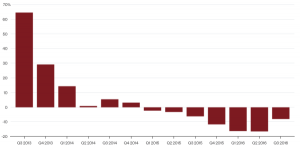Consumers spent $ 861.12 billion online with U.S. merchants in 2020, up 44% year-over-year, according to estimates from Digital Commerce 360. It’s no surprise that virtual credit card swipes were in full force during the pandemic, with at-home delivery options expanding significantly.
But even as shoppers return to brick and mortar registers, the online retail battleground will continue to capture consumer spend – which raises key questions for small businesses’ ecommerce strategies. Whether or not an online store makes sense for your company, how can small businesses keep pace with ecommerce competition while strategically diversifying their sales channels?
Here are a few omnichannel strategies that can help merchants of any size aim to outperform the competition.
Deliver more paths to purchase for consumers
Gone are the days of a hard and fast line between bricks or clicks – at least if you want to grow your reach and protect against disruptions or temporary collapse of one channel.
For retailers with only physical storefronts, their businesses came to a screeching halt in March 2020 when non-essential businesses closed. While funds were poured into enhancing retail websites, alternative ecommerce platforms like home shopping television networks, Instagram’s shop feature, retail-as-a-service home deliveries, and brand partnerships also emerged. As a result, these new sales channels are helping merchants recover lost funds, proving that providing more paths to purchase is highly beneficial for small businesses.
Ecommerce is no longer a stand-alone channel. Rather, it’s a core business component that enables businesses to move from siloed online, in-store, and mobile shopping channels to an integrated commerce solution that seamlessly connects ecommerce and in-store point of sale (POS) to order management, inventory, financials, and customer service.
Automate and adjust as you grow
Beyond greater customer reach and shopping flexibility, ecommerce strategies should be adjusted as you grow. As small businesses scale, so too does the technology supporting them. While new systems can always be put in place, pain points are alleviated when your current system can be adapted or built out, instead of waiting for critical mass or a disruption.
For the single-man operation SoapStandle, founder Jimmy Gould relies on technology like NetSuite to manage his supply chain, monitor his inventory, provide financial analysis, and assist in forecasting. Right now, SoapStandle’s operations are lean, yet with the right technology in place, Gould feels confident he can leverage his company’s data to automate business functions and scale.
Planning for the future requires moving beyond mere best guesses and putting the business in a position to succeed with the right people, processes, and technology in place to scale and take advantage of market opportunities.
Streamline inventory management and fulfillment
Ecommerce is directly connected to inventory management, but having the right platforms in place is key to streamlining fulfillment across sales channels. Pandemic aside, retailers and manufacturers need visibility into every aspect of the supply chain to adjust to demand and purchase behaviors.
For luxury water toy manufacturer Lift Foils, its flashy product was dialing up demand faster than the startup could support. Without tighter inventory controls, Lift Foils needed to shut down production six separate times due to inventory issues. After upgrading its technology infrastructure, the company was able to get a handle on its supply chain and successfully fulfill consumer and retail partners orders through its ecommerce platform. This year, the manufacturer expects to sell 5,000 electric surfboards and aims reach 80,000 surfboards per year by 2025.
Dealing with uncertain outcomes is challenging, but establishing a strong omnichannel presence and forecasting for future scenarios are two crucial ways to gain control over and optimize future outcomes. As far as our crystal ball can see, the future is ripe for establishing and maintaining more than one shopping channel.
Consumers are spending much of their pent up-energy and dollars online. But online isn’t the only path to stellar customer experiences, as single-channel strategies will get merchants only so far in the long run. As the retail industry finds new ways to capture consumers’ attention and discretionary income, alternatives to brick-and-mortar and online shops like showrooms, retail-as-a-service, pop-up shops, brand partnerships, and shared spaces are driving even more competition.
Ultimately, in order to capture spend today and brace against any future disruptions to other channels, ecommerce should be an essential part of every merchant’s business strategy.
Digital & Social Articles on Business 2 Community
(183)
Report Post






